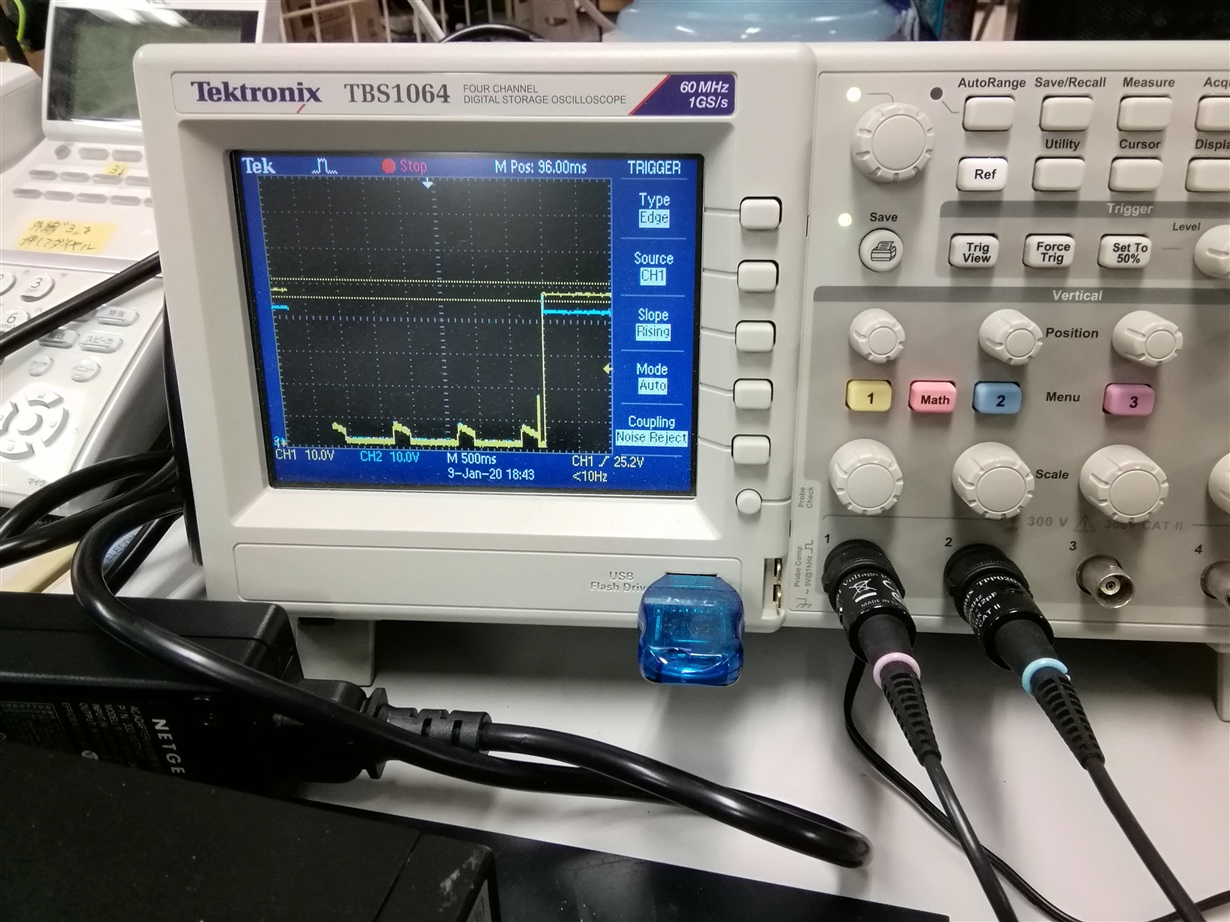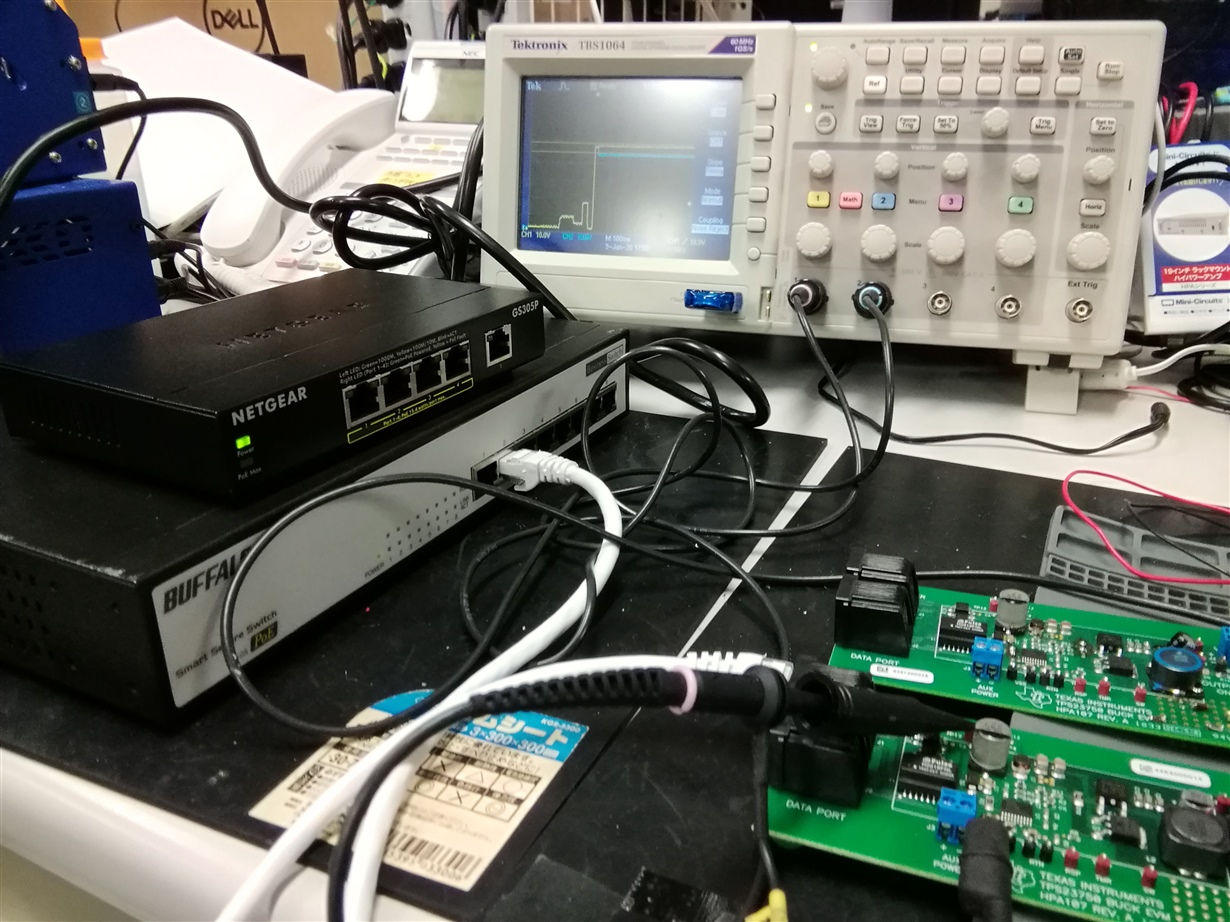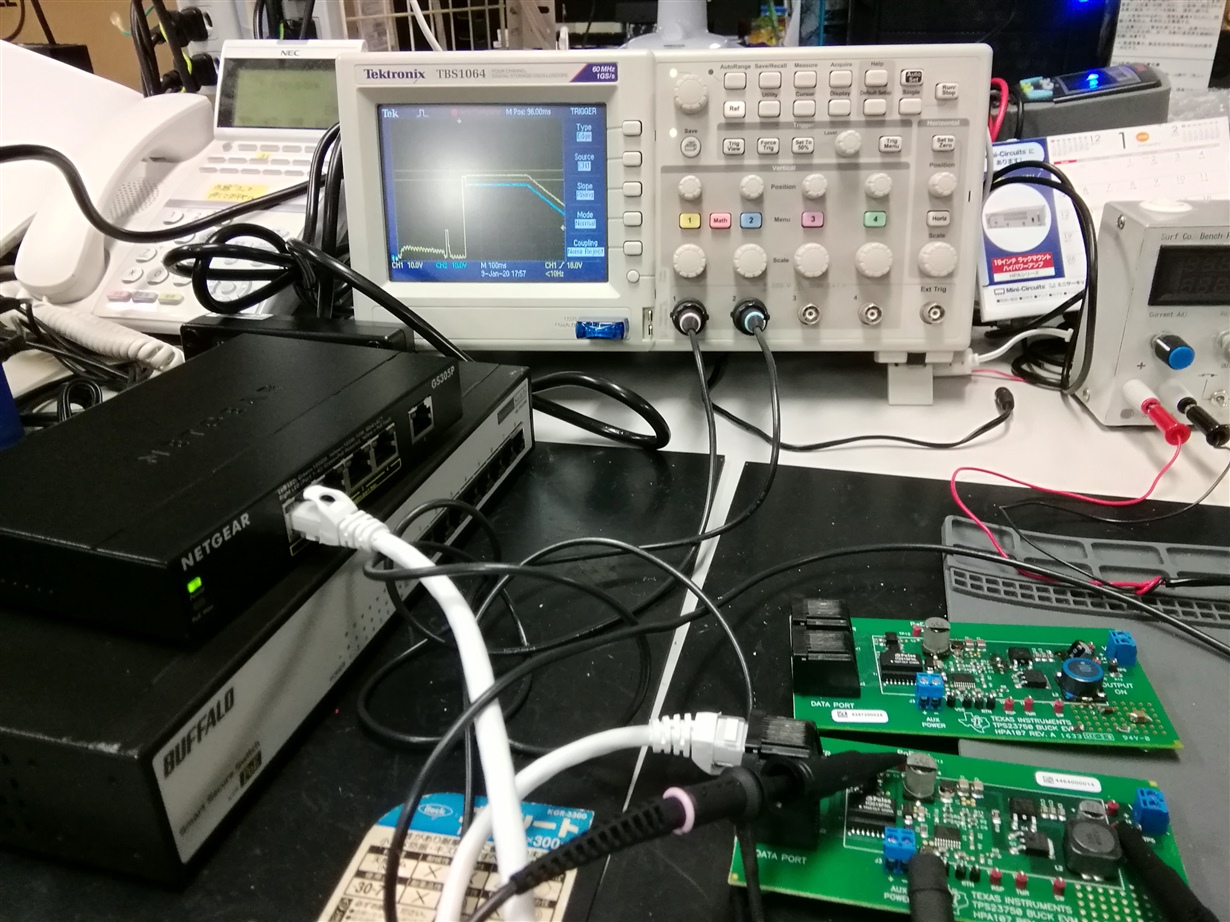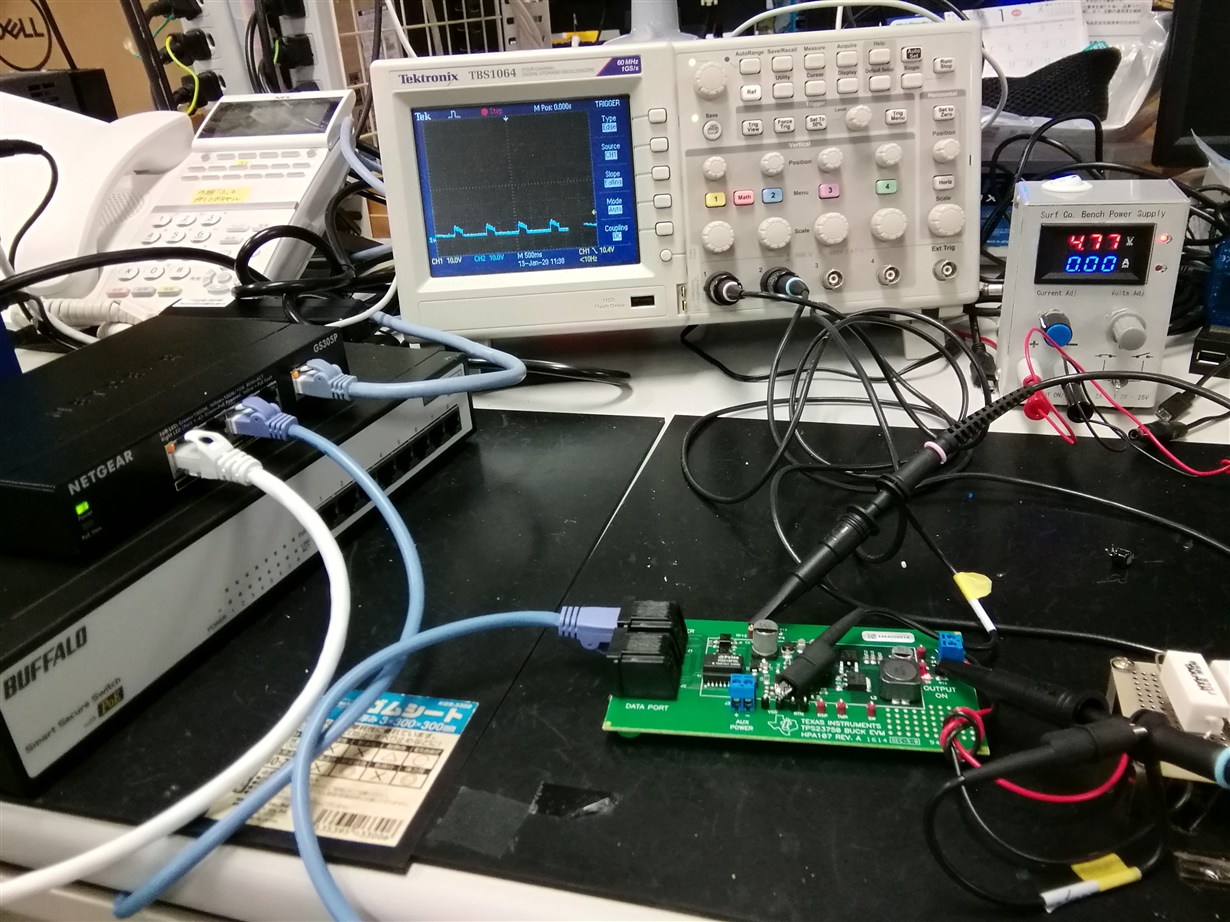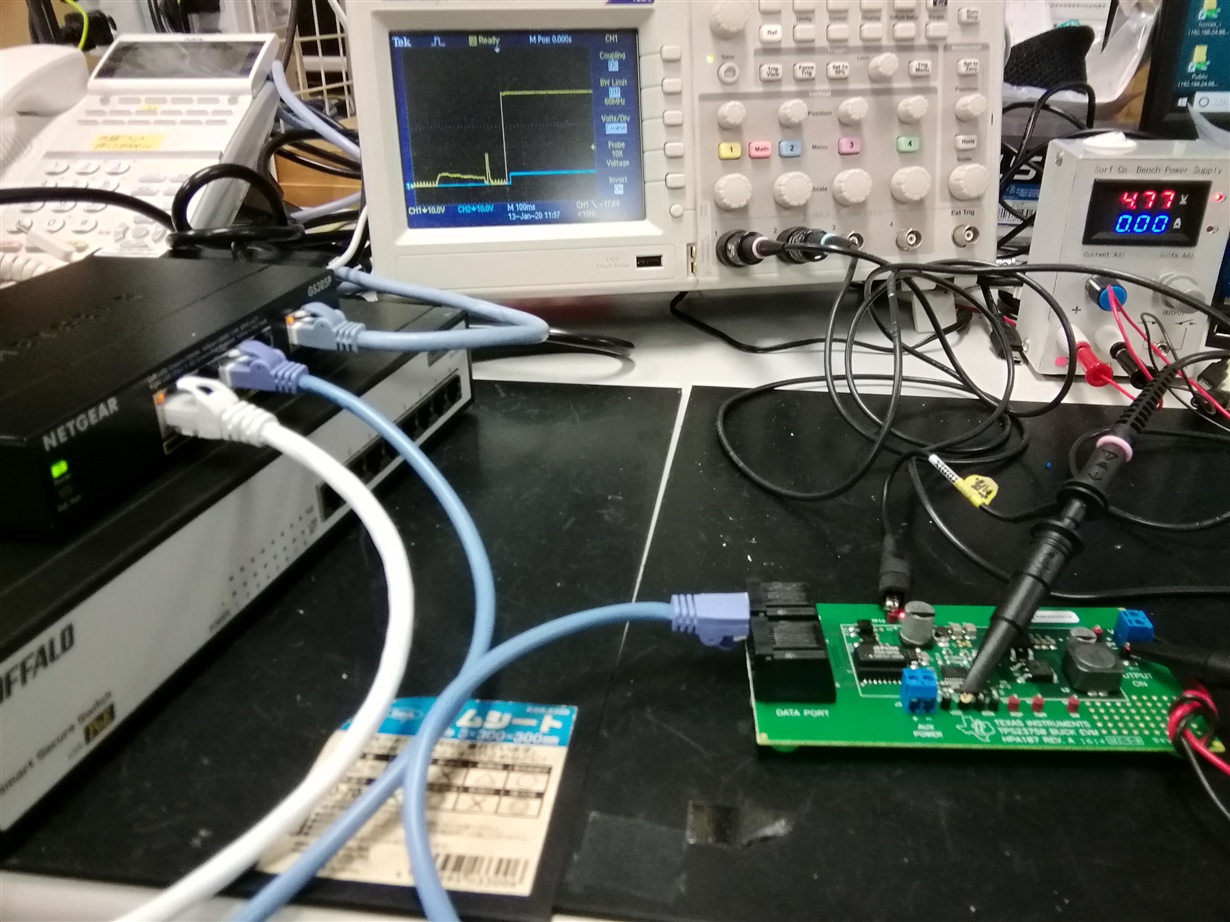Other Parts Discussed in Thread: TPS2378EVM-105
Hi, there.
We are developing PoE Appliance for an particular client.
I'm designing 5V 1A Poe Power referring TPS23750 HPA107 Evaluation Board.
I amended Class defining register R3 from 357 Ohm(Class2) to 549 Ohm(Class2).
Current detecting register R10 from 0.15Ohm to 0.51 Ohm.
It should be supposed to work as Class 2 5V/1A PD.
Actually, It works well with BUFFFALO BSL65-PS-2100M(IEEE802.3af 15.4Wx8) it works good as expected.
But unfortunately I have changed to some NETGEAR or TP-LINK PoE switching hub, it doesn't work correctly.
NETGEAR GS305P spec is also (IEEE802.3af 15.4Wx4).
The symptom is , PoE LED and 5V LED blinks periodically each 3 to 5 seconds with no load.
With dummy load, it recognize after 5 to 10 times PD sense from the NETGEAR hub.
I guess it is caused by my amendment, then I bought new HPA107 Evaluation Board, and tested but result was same.
I changed the cables also.I don't understand what is happening.
I would like to attach some photos w/ Ti eva board voltage waveform.
Your Help is Highly appreciated.
Best regards


